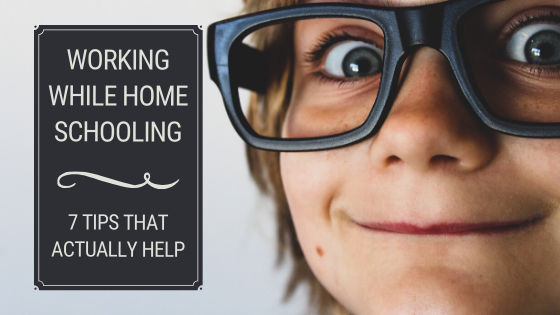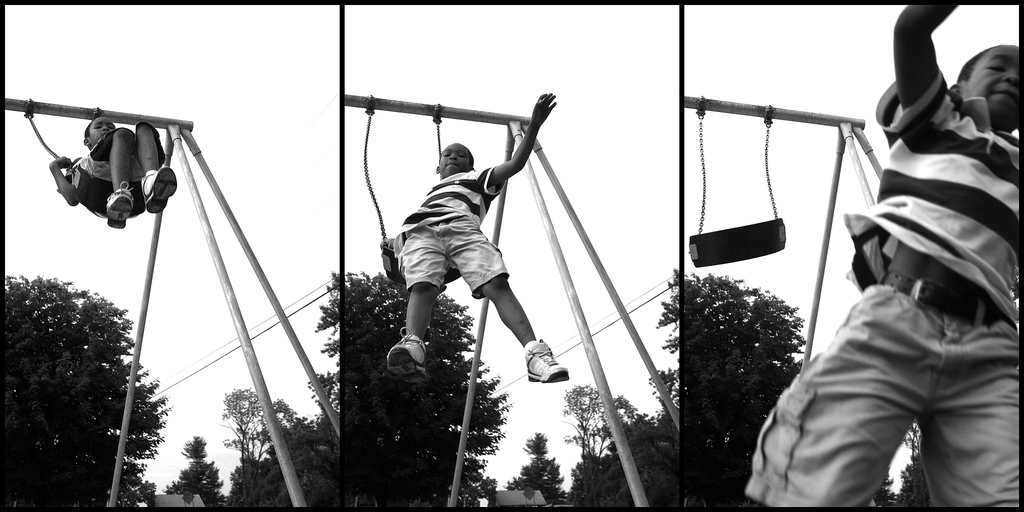Many parents are juggling working from home while homeschooling their kids.
We started working from home 16 years ago (when we first became parents). During that time we’ve also homeschooled our kids.
Even though COVID-19 has changed a lot of things, most of what we learned about raising kids while working still applies today.
Here are some essential keys to working and schooling at home. This is Part 1.
Next week in Part 2, we’ll share the practical strategies that we actually do!
Have realistic expectations of yourself
When we began homeschooling for the first time, an experienced teacher/homeschooling mom told us that it takes about a year to settle into.
Even though I was a teacher, our daughter was 12 years old at that time, she was motivated and organized, even though she and I had a great relationship and I was only homeschooling her part-time, it still took about a year to get in the groove.
So if you’re becoming an “unintentional homeschooling family”, please be gentle with yourself. Even in the best circumstances, this takes time.
Acknowledge that you are attempting to do the nearly impossible
It is almost impossible for two parents to simultaneously work from home full time AND ALSO provide a full-time high-quality educational experience for their kids (and that’s if you’re lucky enough to have a spouse!).
I’m not trying to discourage you by saying this; I’m saying have compassion for yourself. Be encouraged in the knowledge that you are doing something really hard.
If you are a person who is harsh with yourself and prone to self-criticism, give yourself some gentleness and freedom. Lower your standards a little. If–or when–things in your family start “going south” remind yourself that this is nearly an impossible task, give yourself a big hug, and take a deep breath.
Consider your… clothes!
Believe me, I understand that this is a weird point to make. Hear me out… My friend, stylist, and belt designer, Ada recently did a workshop about how to dress while sheltering-in-place. She reminded me that our clothing affects our mood, our mindset, even our productivity.
Just because we can work at home in our yoga pants, doesn’t mean that we should. So unless you are a yoga teacher, I recommend that you ditch the yoga pants and bathrobe, get dressed every day in your regular work clothes, including shoes.
As a work-from-home veteran, dressing for work is an important mindset shift for me. Working in a bathrobe (which I do during an emergency) feels like an emergency. When I wear my “work clothes” to get my work done, it’s calming and familiar, especially because so many other things in my life have changed. As much as I can, I wear “work clothes” to do my work. It feels better.
The same is true for kids. Encourage–but don’t force–them to get dressed every “school day”.
Design your space
Just like clothing, our physical space impacts our mood, our behavior, focus, and productivity. With everyone at home, space is more important than ever. We know about living in a small space because for the first 14 years of our kids' lives, we lived in a 2 bedroom, 1 bathroom California bungalow. In our 900 square foot house, we had a tiny office, which was a converted laundry nook off the side of the kitchen furnished with IKEA shelves. The office was separated from the rest of the house with only a baby gate.
When our kids were toddlers Jason would say “I’m going to work”, and he would kiss us each goodbye. He’d close himself behind the baby gate, put on his headphones, and crank up his music. This was a clear signal to our kids (and to me) that he didn’t want to be interrupted. The physical environment gave everyone a clear message. And it also helped Jason get into “work mode”.
Does everyone in your house have a work/play space, a place where they can be less distracted, less interruptible? If not, get creative. Consider a closet, garage, the car, the bedroom, or even create an area using masking tape to make borders on the dining room table.
Consider how to make things less distracting. Do you need to put on headphones or white noise (like a fan or a phone app)? Do you need to remove visual distractions by closing doors, being in separate spaces away from family members, or using cardboard to create a “study carrel”?
Think about what is developmentally appropriate
Typically infants and toddlers need our attention almost all the time during their waking hours. School-aged children can entertain themselves for an hour or more, but are likely to need significant support to get into a routine with homeschooling. High schoolers can be quite independent entertaining themselves, but likely still need some support with their schoolwork. And during this uncertain time, our kids will likely need more of our support and attention, not less.
The point is, if you get frustrated because your child has interrupted you for the millionth time that day, ask yourself, “Have I set my expectations too high? Developmentally and emotionally is my child able to do what I’ve asked her to do?” And adjust your expectations as needed.
Make things predictable
We are animals; we like things to be predictable (to some extent). Especially when other things in our lives are unpredictable and different, having a flexible routine can be calming. For me, I’m trying to keep my “pre-COVID” morning routine intact. Even though I can’t go to the gym, Jason and I workout outside each morning. Having a predictable wake-up time and a bit of a schedule for my workday helps me stay more productive and focused.
Minimize multitasking
Research says that when we multitask we feel like we are more efficient, even though we actually aren’t. Research also shows that we are happier if we can have uninterrupted focus on tasks and that even unpleasant tasks are more satisfying if we can focus on them. The bottom line is that: multitasking through your whole day is not only less satisfying but also less efficient, so let’s avoid it as much as you possibly can. But how?
In the next blog post, we’ll give you practical tools to help you work while homeschooling.
Let us know, which of these 7 keys is the biggest “game-changer” for you?
Tell us in the comments… Which will make the biggest impact in your family?
- Have realistic expectations of yourself
- Acknowledge that you are attempting to do the nearly impossible
- Consider your… clothes!
- Design your space
- Think about what is developmentally appropriate
- Make things predictable
- Minimize multitasking










Wow, I admire you balancing your work and teaching your kids. This is not an easy task. Kudos to you and your kids!
Hi Celia and Jason. Thank you for this. I’m am extremely lucky and am a stay at home parent to my nephew, 6. He usually attends a sen school and I have been getting him dressed in school uniform to complete our “school work” and felt pretty brutal for doing it as I seem to be the only person I know doing this! But it has absolutely worked for us. Him and me.
Thanks Cecilia and Jason for this. I am a post doc clinical psychology therapist working at a student health center in a college. We moved to conducting video therapy sessions from home and my 3.5 year-old amazing daughter is with me at home as my husband works full time out of the house as his job is considered essential. I am essentially functioning as a single parent and its so hard conducting sessions and trying to homeschool and be present with my child as I should. There is no time for me to write notes during the day so ‘m spending my nights working after my daughter goes to sleep. I get no sleep. It is so hard that it makes me want to cry and I’m actually thinking of either significantly reducing my work time or quitting. Just venting but your post really helped show me that my expectations of myself are probably too high and that I’m not alone in this. I’m really at my breaking point and your post is very helpful.